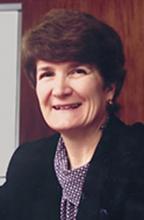When it comes to anxiety in children, we really do need to worry! Anxiety disorders in children, like other "internalizing" problems, are greatly underreported by both children and parents, and even further underdiagnosed by clinicians. Many parents do not recognize even very significant anxiety in their own child, although it affects 12%-20% of children.
The prevalence of mental health problems – anxiety being No. 1 – combined with failure to detect them has led the American Academy of Pediatrics Mental Health Task Force to recommend screening children with a general mental health instrument at all health supervision visits or when circumstances such as divorce or signs such as school failure or irritability suggest a problem. The Pediatric Symptom Checklist is a good option.
If a child screens positive for anxiety, consider assessing the child further with a secondary instrument more specific to anxiety disorders, such as the Screen for Child Anxiety Related Emotional Disorders (SCARED). Screening using a computer-based system such as the Child Health and Development Interactive System (CHADIS) can facilitate the process with automatic assignment of more specific assessments when a general screen is positive. Although primarily used for parental assessment of attention-deficit/hyperactivity disorder (ADHD), the Vanderbilt Assessment Scale can also help detect anxiety along with depression and conduct problems in kids.
As someone who knows both the child and family well, you are in a unique position to look for the possible cause(s) of anxiety, especially significant trauma that can lead to posttraumatic stress disorder (PTSD). It always amazes me how parents do not connect a stress such as a house fire or domestic violence with the child’s symptoms. This may be because they "can’t stand" to recognize their role in exposing a child to a scary event.
Also consider comorbid conditions such as depression or ADHD in your differential diagnosis for an anxious child. Almost one-third of kids with ADHD, for example, also experience significant anxiety or depression at some point.
Most children with anxiety have more than one of the many types: separation anxiety disorder, generalized anxiety disorder, social phobia, specific phobias (including fear of needles and blood), panic attacks, obsessive-compulsive disorder (OCD), and PTSD. Consider all of them even though treatment is similar for most of them. PTSD is more likely to be improved by a detailed review of the traumatic event. Different medications are recommended to treat OCD in children, especially sertraline (Zoloft). It’s also important to consider bipolar disorder, because if you miss this diagnosis, a child could become activated by the medications you may decide to prescribe for anxiety.
When a child presents with anxiety, especially if the family history is not dripping with affected relatives, think about medicines as potential causes, such as antihistamines or steroids, and don’t forget caffeine. Sometimes the very medicines we may have prescribed to treat them – stimulants for ADHD or selective serotonin reuptake inhibitors (SSRIs) – can trigger anxiety as well.
To gauge the functional impact of anxiety, ask the child and parent, "How much do these worries mess things up for you?" You may be amazed to hear of the restrictive lifestyle – never going to the movies or having play dates, for example – that they have accepted without complaining to you.
The first intervention for anxious children, even if they do not qualify as having a "problem" or "disorder" level of impairment, is general advice and psychoeducation about anxiety’s potential reach. They may be unaware that their capable child got a "D" on a math quiz because they spent the first 10 minutes shaking with anxiety. Also explain how appropriate anxiety treatment can help their child engage in regular activities.
Given that life has stress, working to build coping is critical and rewards can help. For younger children, I suggest parents give bravery marks on their hand and give older children points for coping just "a little better" with things that make them anxious. A child afraid of going upstairs alone might get marks for going halfway or an older child might get points for being brave enough to phone for pizza.
Keeping routines and maintaining adequate sleep also help stabilize mood and cut down on outbursts in anxious children.
The first treatment for anxiety disorder, particularly for milder anxiety, is therapy, not medicine. Cognitive-behavioral therapy (CBT) has the most evidence as being effective. Education, relaxation training, desensitization, and teaching self-talk to counter negative thoughts are the main components of CBT.
As kids get older they need to learn to recognize their anxiety and the role it plays in their lives. This awareness alone has been shown in some studies to be as effective as CBT itself. CBT alone will reduce symptoms to below threshold in 50%-80%. While that’s very good, that means symptoms will not resolve for 20%-50%.


